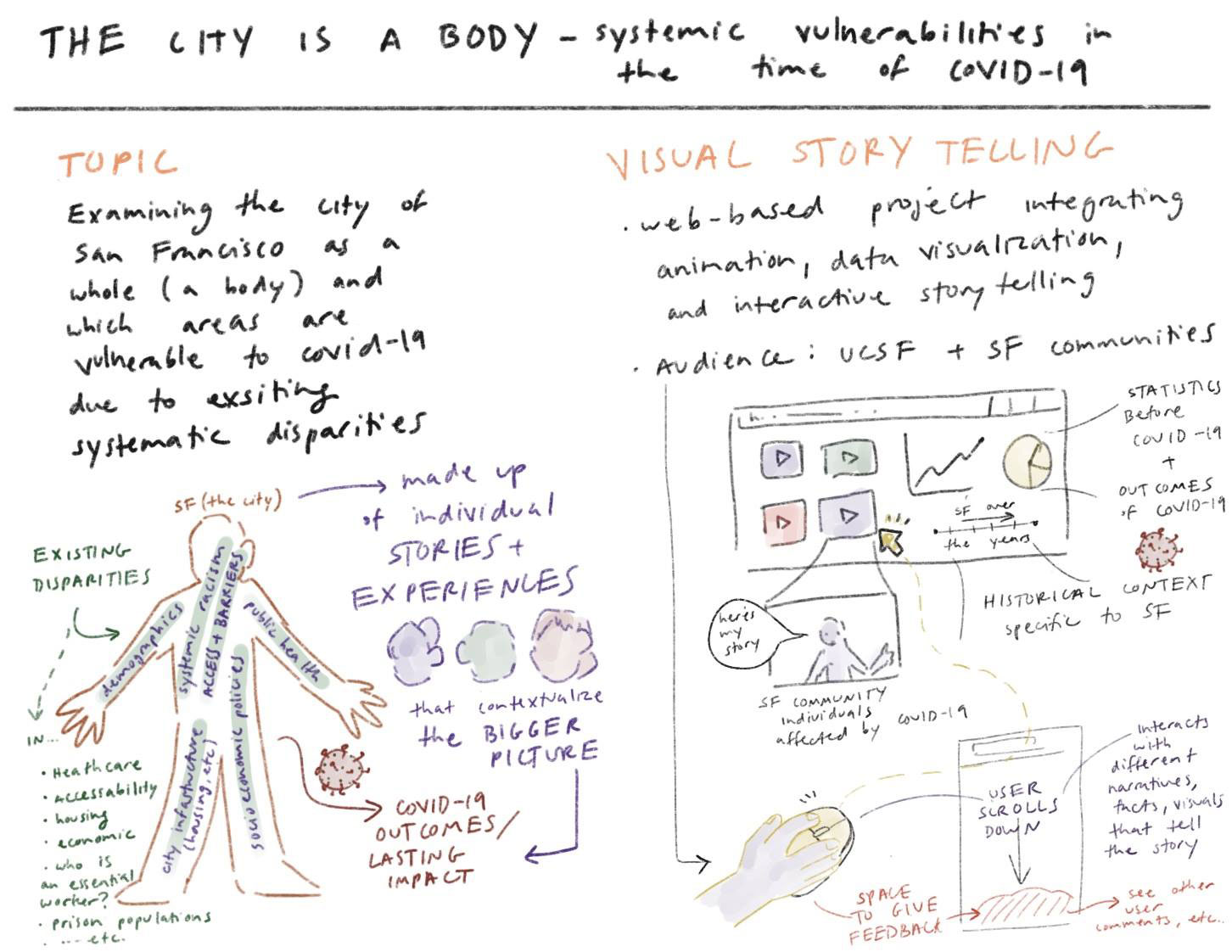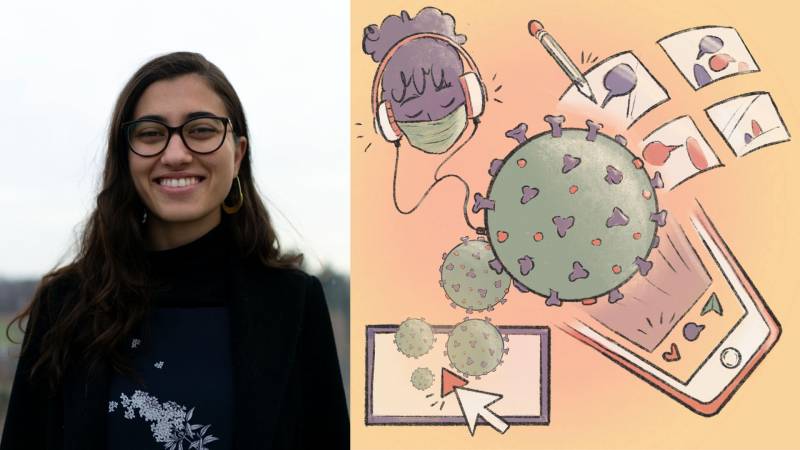The past six months have been punctuated by brutality and inequality. The COVID-19 pandemic. Police killing people of color, and the subsequent, ongoing Black Lives Matter protests. Police use of teargas at protests during an infectious outbreak, which helps spread the virus and worsens symptoms.
It’s in this moment that biomedical illustrator Farah Hamade, the inaugural artist in residence at UCSF Library, is working to untangle what she calls “a whole web” of interrelated issues impacting San Franciscans during this challenging year.
For her interactive storytelling project, “The City is a Body,” Hamade is collecting San Franciscans’ experiences with the COVID-19 pandemic. “The virus doesn’t care who you are, but who catches it has a lot to do with systemic disparities,” she says. “Systemic racism impacts access to healthcare, housing and homelessness, and exacerbates public health crises.”
She plans to use animation and data visualization to create an interactive portrait of people’s lives during this time of overlapping, unrelenting challenges. “The pandemic has exposed so many issues that already existed,” she adds.

The residency awarded Hamade $6,000 to cover materials, travel and other related expenses. Because of the myriad complications posed by the pandemic, however, Hamade is not physically in residence at the library. After visiting in person in February, she is working on her project remotely and has full access to special collections and assistance from library archives staff, as well as digital tools in the library’s Makers Lab.
In addition to being the first year the library is offering the program, the residency is also Hamade’s first. Born and raised in San Francisco, Hamade has a bachelor of science in neurobiology, physiology and behavior from UC Davis and took courses in anthropology and studio art during her undergraduate studies. This summer, she graduated from the University of Toronto with a masters in biomedical communications.
The public most often sees medical illustrations in pharmaceutical advertising. But the art form has other applications, such as the already-iconic spiky blob that two Centers for Disease Control and Prevention (CDC) illustrators created to help individuals visualize the novel coronavirus.


